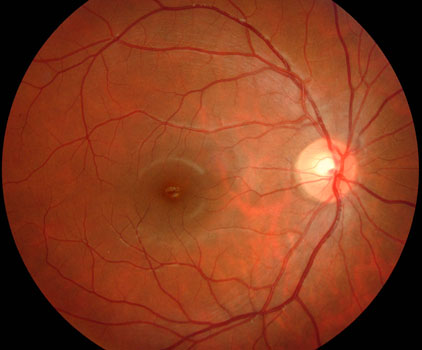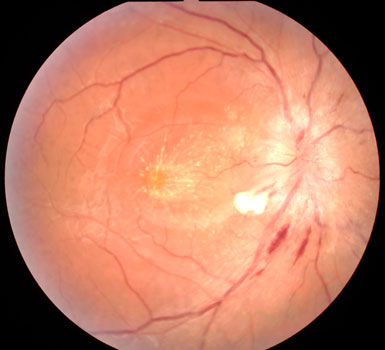What is hypertensive retinopathy?
Almost one out of every 3 adults in the US have hypertension and virtually none of these will develop any blood-pressure-related vision loss. However, even patients with controlled hypertension have an increased risk of anterior ischemic optic neuropathy, wet macular degeneration, retinal arterial macroaneurysms, and retinal vein occlusions. Patients who have severely elevated blood pressures are at an increased acute risk for headaches, stroke and heart attack. Some can also develop temporary or permanent vision loss.
How is hypertensive retinopathy diagnosed?
A dilated retinal examination will detect the variable findings of scattered retinal hemorrhages, white patches of poor circulation (cotton-wool spots), macular fatty deposits (lipid), macular edema, and swollen optic nerves. The findings are almost always noted in each eye. OCT scanning can detect the extent of the optic nerve and macular swelling.

Normal macula

Hypertensive retinopathy with scattered hemorrhages, cotton-wool spots, and lipid
How is hypertensive retinopathy treated?
The retinal and optic nerve findings will usually resolve within weeks to months of treating underlying hypertension. Depending on the extent and duration of the eye findings, most patients completely recover although some can develop permanent vision loss. Diagnosing hypertensive retinopathy and referring the patient for immediate blood pressure treatment can be life-saving.
View more retina images at Retina Rocks, the world’s largest online multimedia retina image library and bibliography repository.



